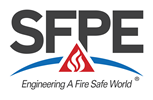FEMTC 2011
Evaluation of Thermal Radiation Models for Fire Spread between Objects 
Rob Fleury - ARUP, Sydney
Abstract
A current research initiative aims to produce a quantitative risk assessment tool, in the form of a fire zone model, for use in fire safety engineering design of buildings. In order to estimate if or when a remote object from the fire will ignite, a radiation sub-model has been developed – part of which determines the thermal radiation received by the secondary object directly from the fire. There are a variety of methods presented in the literature that attempt to calculate the thermal radiation to a target. The performance of six of these methods (including a spherical model, a basic correlation, three different cylindrical models and a planar model) is investigated in this research. The predictions made by the models are compared with actual measurements of radiant heat flux around a propane gas burner. Different fire scenarios are represented by varying the burner geometry and heat release rate, with heat flux measurements being recorded in different locations around the fire. After comparing the measured data with predictions made by the theoretical radiation methods, the spherical (or point source) model was found to be the best performing method on average. This was unexpected given the relative simplicity of the model in comparison to some of its counterparts. Additionally, the point source model proved to be the most robust of the six methods investigated, being least affected by the experimental variables. Due to its performance and ease of implementation, the point source model has been recommended for use in the radiation sub-model within the probabilistic zone model software.
Presentation
Resources
| Paper | Presentation | ||
|---|---|---|---|
| HTML | HTML | ||
| Resources Archive File (.zip) | |||

